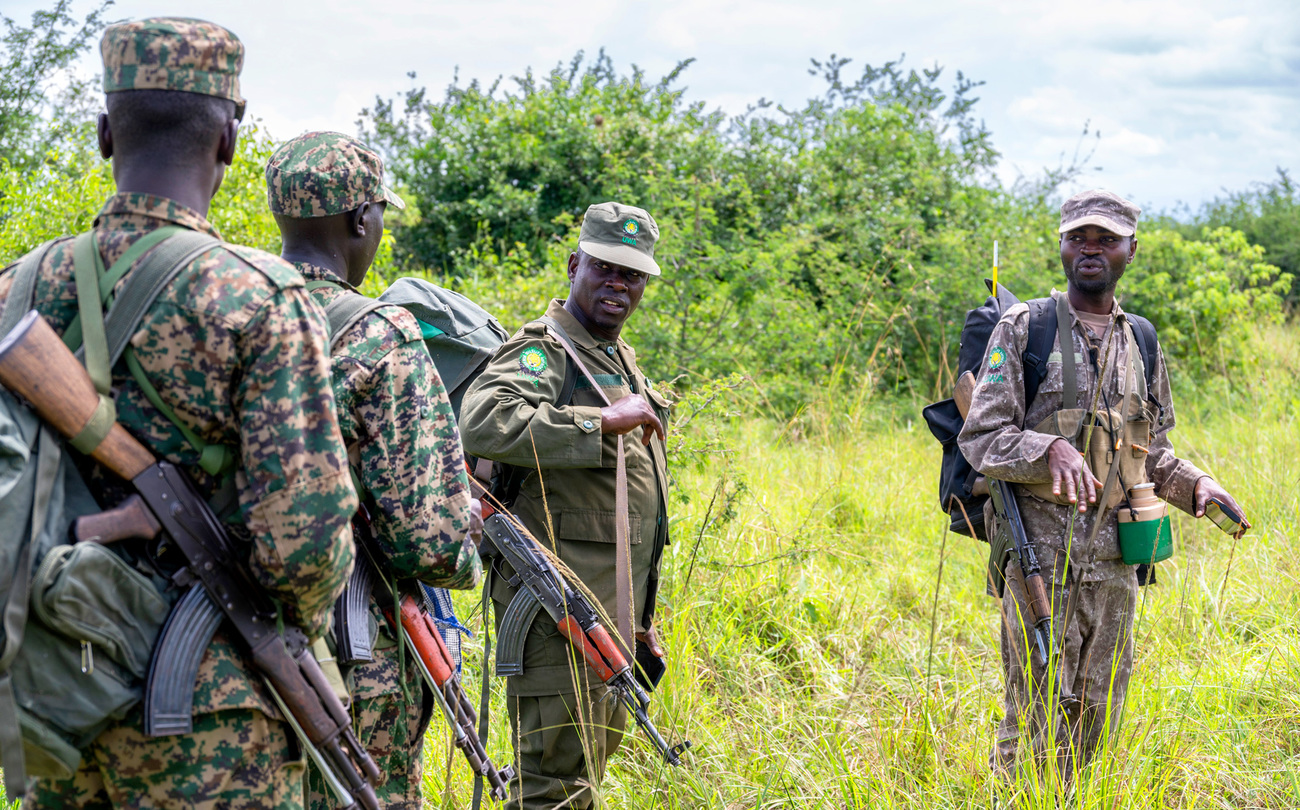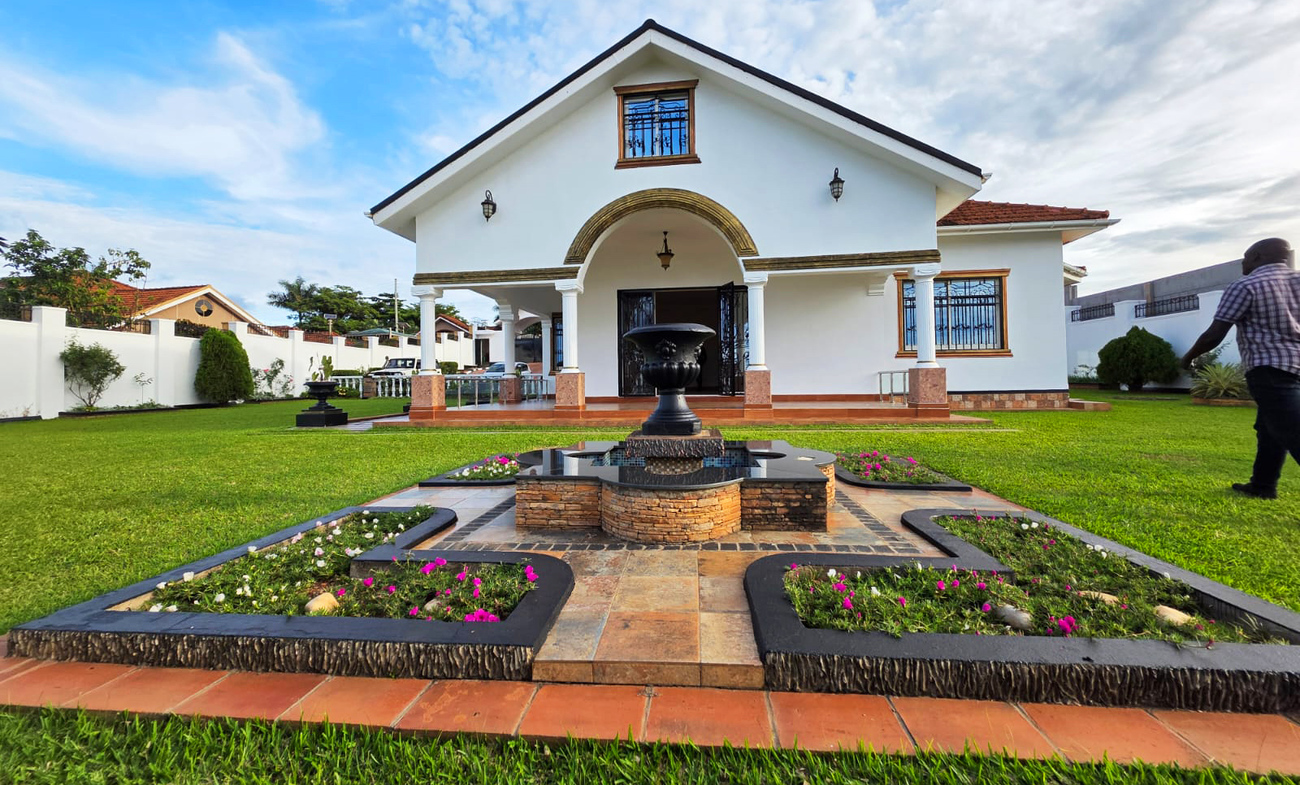Moses Olinga
Why IFAW is building a wildlife crime intervention hub in Uganda
Why IFAW is building a wildlife crime intervention hub in Uganda
IFAW’s newest office opened in Kampala, Uganda, in 2024. While we have been actively working in Uganda for some years, IFAW’s official registration as an NPO, means we can better coordinate our efforts beyond wildlife life law enforcement.
Our work will include supporting wildlife rescue operations and habitat restoration, strengthen community engagement, and spearhead conservation interventions in the DRC and South Sudan, which are rich in wildlife but plagued by civil unrest, insecurity, the proliferation of illegal firearms, and poor law enforcement.

Straddling the majestic Nile River, Uganda—known as ‘the pearl of Africa’—is blessed with lush soils, abundant rainfall, and a stunning array of landscapes, including tropical rainforests, savannahs, woodlands, and montane forests. When it earned this nickname at the turn of the 20th century, the country, like most of Africa, teemed with biodiversity.
However, like its East African neighbours, Uganda suffered a severe spate of poaching in the 1980s, which, combined with political instability, wiped out the country’s black rhino and nearly annihilated its elephant population, reducing it from 30,000 in the 1960s to fewer than 1,000 individuals. As of 2018, 14 mammal species in Uganda are flagged by the IUCN Red List as ‘nationally threatened.’
Wildlife faced the severest threat in disturbed transboundary landscapes steeped in political crises and civil unrest. Iconic animals such as the critically endangered mountain gorillas in the Virunga Volcanoes Transboundary Conservation Area, a UNESCO World Heritage complex shared between Uganda, Rwanda, and the DRC, were in grave peril, as were elephants in Kidepo, a savannah landscape which spanning Uganda and South Sudan.
The early 2000s was, fortunately, a period of recovery for both parks and wildlife. Political stability, stronger anti-poaching laws, law enforcement efforts by the Uganda Wildlife Authority (UWA), and the support of partners such as IFAW have seen wildlife populations stabilize, with the elephant population now estimated at 7,200 as per the UWA 2023 protected area census.
A new threat on the rise
However, on top of poaching, invasive species, human-wildlife conflict, and habitat loss, fragmentation, and degradation, a new threat has emerged. In the 2018 Wildlife Trafficking Assessment Report by TRAFFIC, Uganda was named as a transit route and a consolidation hub for wildlife contraband in the East African region. In 2024, Lusaka Agreement Taskforce Field Officer Wesley Kipkazi reported that traffickers exploit porous borders and enforcement loopholes in Kenya, South Sudan, Djibouti, and Ethiopia and the insecurity in Somalia and eastern DRC to access ports in Central and West Africa through Uganda.
The contraband, he explained, is smuggled into Uganda and transported in small quantities, which are consolidated in secure locations, concealed in scrap metal, charcoal, and bananas, and moved in trucks to Nigeria, Cameroon, Senegal, and Port Pointe-Noire in Republic of the Congo.
IFAW started supporting park operations and law enforcement in Uganda’s Queen Elizabeth, Murchison Falls, and Kidepo National Parks in the 1980s to protect endangered elephant populations. Our footprints are still visible in the form of old vehicles and field ranger outposts from the 1990s.
Community engagement and collaboration
Alarmed by an increase in the trafficking of elephant ivory, rhino horn, and pangolin scales within East Africa region, IFAW broadened its scope in 2014—engaging communities in wildlife areas and building the capacity of state officials in Entebbe to detect, investigate and prosecute wildlife crimes. Across the Virunga landscape, IFAW facilitated close collaboration between Uganda’s Queen Elizabeth and Virunga National Parks to improve joint patrols, intelligence sharing, transboundary investigations, and arrests and seizures.

The establishment of IFAW as a permanent entity in Uganda, will increase our reach across other east andcentral African countries, including DRC and South Sudan and spearhead urgent conservation interventions.
We plan to strengthen the connectivity between the transboundary landscapes that Uganda shares with Kenya, DR Congo and South Sudan by working with wildlife authorities, communities, and other development partners to increase the room to roam for wildlife and make these spaces safer for people and biodiversity.
Conservation funding is critically needed to improve community participation and the welfare of game scouts to help mitigate human-elephant conflicts, support anti-poaching operations, and curb wildlife trafficking across the porous international boundaries that Uganda shares with neighbouring countries.
Related content
every problem has a solution, every solution needs support.
The problems we face are urgent, complicated, and resistant to change. Real solutions demand creativity, hard work, and involvement from people like you.